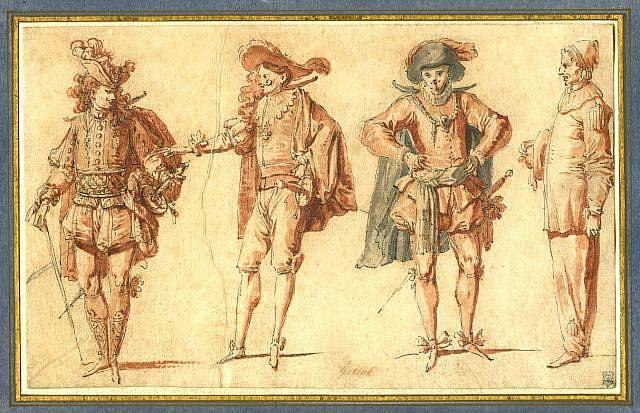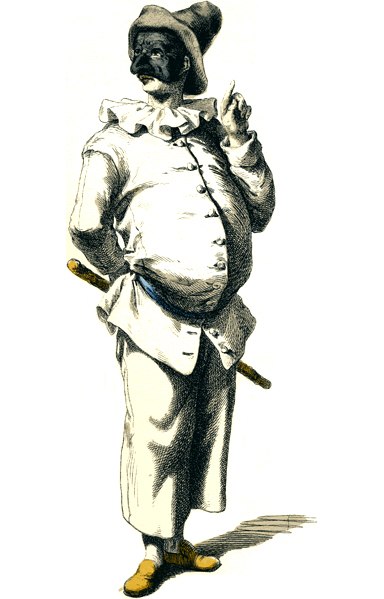Innamorati were stock characters within the theatre style known as commedia dell'arte, who appeared in 16th-century Italy. In the plays, everything revolved around the lovers in some regard. These dramatic and posh characters were present within commedia plays for the sole purpose of being in love with one another, and moreover, with themselves. These characters move elegantly and smoothly, and their young faces are unmasked unlike other commedia dell'arte characters. Despite facing many obstacles, the lovers were always united by the end.
Two standard servants opposite a well-dressed, unmasked woman, La Dona Lucretia, who represents innamorata
Character Named "Captain Cermonia" bows to unmasked woman named "Lavinia" who may be an example of innamorata or a female character.
Commedia dell'arte troupe with innamorata represented by the actress in the center
Commedia dell'arte was an early form of professional theatre, originating from Italian theatre, that was popular throughout Europe between the 16th and 18th centuries. It was formerly called Italian comedy in English and is also known as commedia alla maschera, commedia improvviso, and commedia dell'arte all'improvviso. Characterized by masked "types", commedia was responsible for the rise of actresses such as Isabella Andreini and improvised performances based on sketches or scenarios. A commedia, such as The Tooth Puller, is both scripted and improvised. Characters' entrances and exits are scripted. A special characteristic of commedia is the lazzo, a joke or "something foolish or witty", usually well known to the performers and to some extent a scripted routine. Another characteristic of commedia is pantomime, which is mostly used by the character Arlecchino, now better known as Harlequin.
A commedia dell'arte street play during the Carnival of Venice
Commedia dell'arte Troupe on a Wagon in a Town Square by Jan Miel (1640)
Claude Gillot (1673–1722), Four Commedia dell'arte Figures: Three Gentlemen and Pierrot, c. 1715
Pulcinella, drawn by Maurice Sand







